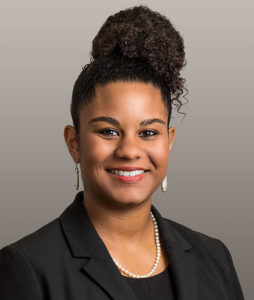• By Paige Duggins-Clay, J.D. • IDRA Newsletter • June-July 2022 •
 Restorative justice is a relational approach to strengthening connections, establishing values, building trust and responding to harm in our communities (Duggins-Clay, 2022). This article walks through the foundational principles of restorative justice, discusses how restorative principles have translated into restorative practices in education, and provides recommendations for beginning implementation of restorative practices as an alternative to exclusionary discipline.
Restorative justice is a relational approach to strengthening connections, establishing values, building trust and responding to harm in our communities (Duggins-Clay, 2022). This article walks through the foundational principles of restorative justice, discusses how restorative principles have translated into restorative practices in education, and provides recommendations for beginning implementation of restorative practices as an alternative to exclusionary discipline.
A Rich History Grounds Restorative Practices
Educators have been incorporating restorative practices in schools across the world for generations. In recent history, though, western countries and the United States in particular shifted away from relational and communal methods of conflict resolution and instead emphasize punitive, carceral and violent responses to wrongdoing (Evans & Vaandering, 2016; Thorsborne & Blood, 2013; Gonzalez, 2012).
Since at least the 1980s, the so-called “war on drugs” ushered in an era of mass incarceration in the United States (Alexander, 2010). Predictably, this trend of imposing harsher sentences for individuals accused of relatively minor offenses found its way into education law and policy. Beginning in the 1990s, schools increasingly became secure facilities in which exclusion, isolation and incarceration have become normalized as responses to both ordinary and more serious student misbehavior (Gonzalez, 2012). These policies have resulted in negative academic and life outcomes for children, particularly Black and Latino children (Johnson, 2016; IDRA, 2022).
In comparison, as many U.S. schools began to establish zero tolerance policies, schools in Australia and New Zealand adopted legislation to codify the Maori (an indigenous community native to New Zealand) approach to conflict resolution (Gonzalez, 2012). The Oranga Tamariki Act 1989 (originally named the Children, Young Persons and Their Families Act) codified the Maori “family group conferencing” framework for youth justice that centers and involves family and affected community members in decision-making about what to do in the wake of youth misconduct (Thorsborne & Blood, 2013). Schools in Australia and New Zealand then began using restorative conferencing to provide meaningful methods of accountability for students who cause harm and later to build a more positive school culture (Thorsborne & Blood, 2013). The Maori model is widely credited as being a springboard for incorporating restorative practices in educational settings (Evans & Vaandering, 2016; Gonzalez, 2012).
A growing body of research establishes the effectiveness of school-based restorative practices in U.S. schools in reducing suspensions, expulsions and police referrals, while improving academic outcomes and decreasing violence (Davis, 2019; Gonzalez, et al., 2018).
Restorative Practices in School Policy – Guiding Principles for Implementation
Restorative practices reject punitive and exclusionary responses to harm, which use isolation, shame, and deprivation of privileges and rights as tools to punish a person who engages in misconduct. Instead, restorative practices value all school community members, including students who have wronged their peers or their classroom community.
When student misconduct occurs, rather than pushing students out of the classroom or labeling them as “bad kids,” we affirm their worth, find ways to strengthen their ties and commitments to the school community through support and accountability, and invest in the support and resources necessary to address any root causes underlying the misbehavior.
A growing body of research establishes the effectiveness of school-based restorative practices in U.S. schools in reducing suspensions, expulsions and police referrals, while improving academic outcomes and decreasing violence.
Under a restorative framework, students who cause harm are expected to repair it to the fullest extent possible with the support of adults and other community members. And by working to repair the situation, the person who caused harm is able to regain respect and trust from the community. Restorative practices can be available for all kinds of harm created by all kinds of school community members, including educators and parents.
With growing awareness of and commitment to restorative values, educators are now turning to the work of establishing and expanding restorative practices in schools. Implementation of restorative practices tends to fit within one of the three following categories:
- Restorative circles (community building through group reflection guided by a trained facilitator);
- Restorative conferences (alternative discipline and mediation through small circles designed to respond to incidents and identify root causes of behaviors in order to prevent future harm); and
- Restorative climate and culture (addressing and promoting equity, culturally-sustaining learning environments and social-emotional learning). Often referred to as the “whole school approach” to restorative practices in education, these three “tiers” provide the foundation for developing restorative school communities (Gonzalez, et al., 2018).
To begin implementing restorative practices using a whole school approach, school leaders should consider the following action steps.
Planning and Preparation
- Identify and provide foundational training for a core group of educators, school leaders and students that can lead your school’s restorative justice implementation. This core team can receive, evaluate and facilitate discipline cases referred for restorative responses and can serve as ambassadors to help educate and model restorative practices throughout the school community.
- Review current policies, procedures and practices to eliminate formal and informal barriers to restorative responses to student misconduct, such as mandatory referrals to administration or suspension that are not required by law.
- Build community engagement and awareness of your school’s commitment to restorative justice through community presentations, listening sessions and roundtables.
Initial Implementation
- Provide training for all school personnel on restorative justice foundations and circle-facilitation basics. Encourage educators to begin using community-building circles within the classroom to familiarize students with restorative practices.
- Review campus and/or district discipline data and engage in listening sessions with educators to identify one or two categories of misconduct that will be addressed using exclusively restorative responses. Consider selecting low-level conduct offenses for initial implementation and build toward using restorative responses to more serious incidents.
- Document your campus’s or your district’s commitment to responding to the identified misconduct using restorative process and establish referral processes. Share this commitment and information about the policy and process with community members, including educators, parents, students and any community partners.
- Begin to refer and engage in restorative conferences for identified cases. Document outcomes and observations for continuous improvement and evaluation. Share stories of success with the school community.
Broader Implementation
- Continue to use restorative practices to build and strengthen community relationships. Incorporate circles into weekly and/or daily school routines.
- Evaluate and reflect on outcomes and observations from initial implementation of restorative responses. Adjust practice as necessary to address challenges and opportunities for improvement.
- Expand use of restorative practices in other conduct cases as comfort and experience grows. Include cases involving more serious offenses, in collaboration with other support professionals (e.g., counselors, violence prevention specialists).
The IDRA EAC-South supports public schools, districts and education agencies across the U.S. South that seek to address issues of discrimination and implement strategies, like restorative practices, that build safe and supportive schools for all young people. For more information about our work and services visit www.idraeacsouth.org and check out more resources for advocacy organizations and individuals at www.idraseen.org.
Resources
Alexander, M. (2010). The New Jim Crow: Mass Incarceration in the Age of Colorblindness.
Davis, F.E. (2019). The Little Book of Race and Restorative Justice: Black Lives, Healing, and U.S. Social Transformation.
Duggins-Clay, P. (March 23, 2022). Realizing Our Common Humanity – Restorative Practices Can Build and Strengthen Relationships in Post-Pandemic Schools. Learning Goes On.
Evans, K., & Vaandering, D. (2016). The Little Book of Restorative Justice in Education: Fostering Responsibility, Healing, and Hope in Schools.
Gonzalez, T. (2012). Keeping Kids in Schools: Restorative Justice, Punitive Discipline, and the School to Prison Pipeline. Journal of Law & Education, Vol 41, No. 2
Gonzalez, T., Sattler, H., & Buth, A. (2018). New Directions in Whole-School Restorative Justice Implementation. Conflict Resolution Quarterly.
IDRA. (2022). Zero Tolerance Policies in Texas Push Black Students and Hispanic Students Away from School, web page.
Johnson, R. (2016). Zero Tolerance Policies Likely Contribute to High Attrition Rates of Black Students and Hispanic Students. Texas Public School Attrition Study, 2015-16.
Sumner, M., Silverman, C., & Frampton, M.L. (2010). School-based Restorative Justice as an Alternative to Zero-Tolerance Policies: Lessons from West Oakland. Thelton E. Henderson Center for Social Justice, University of California, Berkeley, School of Law
Thorsborne, M., & Blood., P. (2013). Implementing Restorative Practices in Schools, A Practical Guide to Transforming School Communities.
Paige Duggins-Clay, J.D., is IDRA’s chief legal analyst. Comments and questions may be directed to her via email at paige.duggins-clay@idra.org.
[©2022, IDRA. This article originally appeared in the June-July 2022 issue of the IDRA Newsletter by the Intercultural Development Research Association. Permission to reproduce this article is granted provided the article is reprinted in its entirety and proper credit is given to IDRA and the author.]



